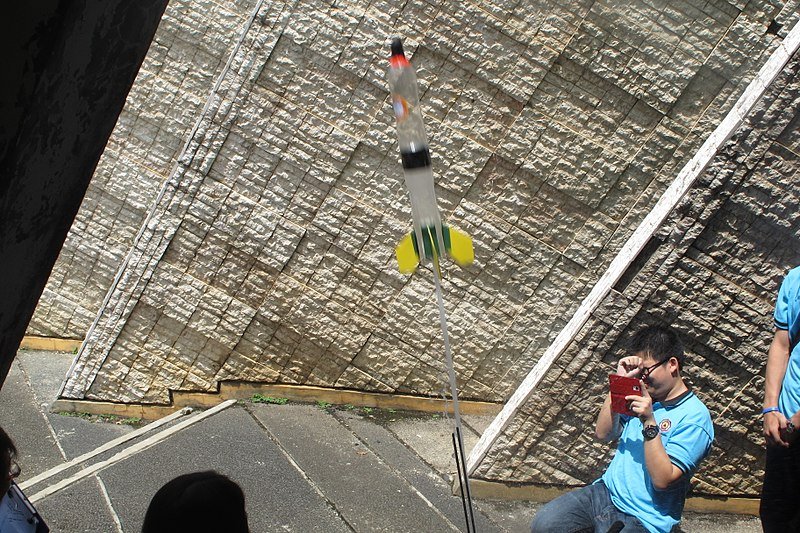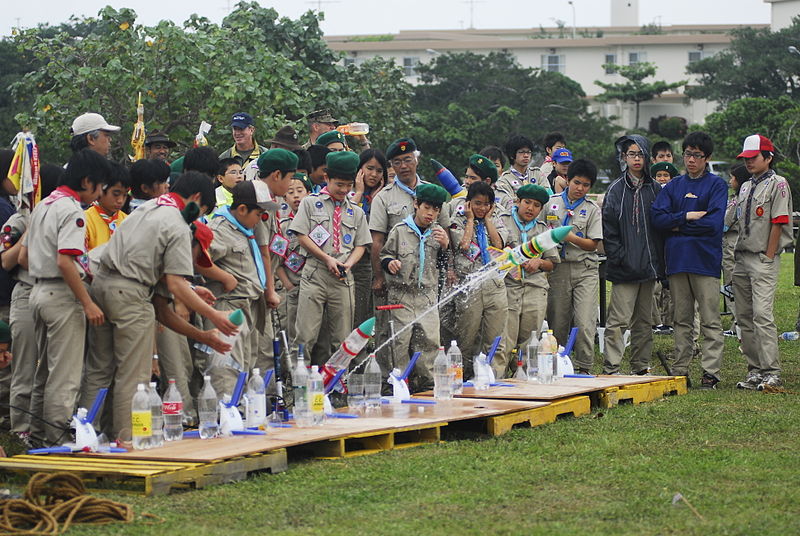Launching water rockets is a fun way to learn a lot about science, more particularly about Physics. There are many things you can learn when making and launching water rockets. Some of these include pressure, distance, volume, mass, force, acceleration, and as well as projectile motion. When you launch a water rocket, you might think that mass and force are the main things you need to focus on to make it fly higher. That might be true, but there’s another factor that affects the distance a water rocket flies, and that is, angle or projectile motion.
A projectile refers to any object thrown into space by the exertion of force. Though any object in motion through space may be called a projectile, this term more commonly pertains to a ranged weapon. This means that launching a water rocket is an example of a projectile. It’s because a water rocket is an object that is projected at an angle to the horizontal, and it has both the vertical and horizontal components of velocity.
To add to your knowledge about water rockets, we are going to explain how angle affects the distance a water rocket flies.
How Does Angle Affect the Water Rocket’s Distance?
There are different terms used when talking about projectiles at a specific angle. Here are some of those which can be applied when launching a water rocket:
- Time to reach maximum height: This is the time taken for the projectile or water rocket to reach the maximum height from the plane of projection.
- Time of flight: This is the total time taken for the projectile or water rocket to fall back to the same plane from which it was projected.
- Maximum height: This is the maximum height attained by the projectile or water rocket, or the maximum displacement on the vertical axis covered by the water rocket.
- Range: This is the horizontal distance covered by the projectile or water rocket.
Therefore, when launching a water rocket, you can challenge yourself to find the angle that gives you the maximum distance or range of flight. For example, the extremes of shooting the rocket straight up or 90 degrees will yield no distance. So, what angle do you think will give you the maximum flight distance?
To be able to discover that angle, you can look at the problem in two ways. First, you can look at it philosophically then see if it’s true when you look at the same problem mathematically.
It’s obvious that when a water rocket is launched at 90 degrees, all the velocity is up. This means that there is no velocity moving along land in the x-direction. Hence, the rocket will get no distance. If you launch the water rocket at 0 degrees, you will get the opposite result. This means that all the velocity is along the land or in the x-direction. Since it never gets up above ground level, it will also not get any distance. With this logic, can you tell which angle might work to get a maximum distance when launching a water rocket?
The best answer for this is 45 degrees. It’s because when a water rocket is launched at 45 degrees, you will get an equal amount of velocity on both x and y-directions. This will give the rocket lift time to move across the land.
You can also find the answer by using Newton’s equations of motion, which is the maximum range in projectile motion. If you want to see the full equation, you can check out this post shared by Wired.
The Average Angle Method
Another equation you can use to determine the best angle to launch a water rocket is the average angle method. This method makes an approximation of rocket height instead of an exact calculation. It means that you will be calculating the height of the flight of a water rocket, considering human error and the basic measuring instruments you have, like a protractor.
This is a trial and error method, meaning you will be trying out different angles to know the best angle that will reach the farthest distance. Here are the steps you can follow:
1. To do this, you need to measure two locations that are 150 feet on either side of an indirect line with the launch pad. Let a person stand at each of these locations. Both of them should have a protractor to help them determine the angle a rocket reaches from their vantage point.
2. Assume that you have launched the water rocket, and Person A measures 45 degrees, and Person B measures 30 degrees.
3. To calculate the height of the water rocket, use the average angle formula, which is a=b (tan A).
a = height of rocket flight
b = distance from the launch pad which is 150 feet
A = the average of the two angles (Angle 1 = 45°, Angle 2 = 30°); A=37.5° or round it off to 37°
4. Lastly, use the formula a=150 ft. x (tan 37°) to get the height of the water rocket flight. When you compute this, you will get 113 feet. Therefore, 113 feet is the height of the water rocket flight.
Conclusion
With these methods, we can conclude that angle does affect the distance that a water rocket flies. The next time you try to launch a water rocket, you can experiment on launching it from different angles and see how the distance differs from each launch.


